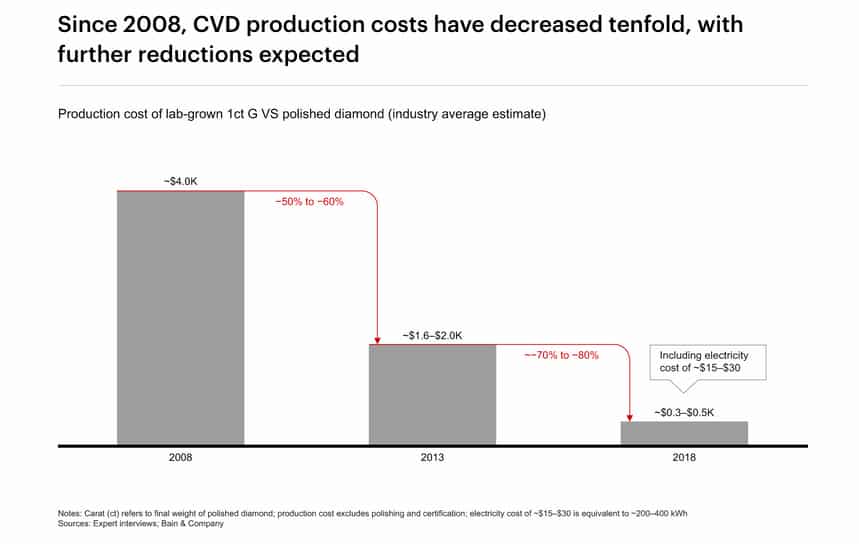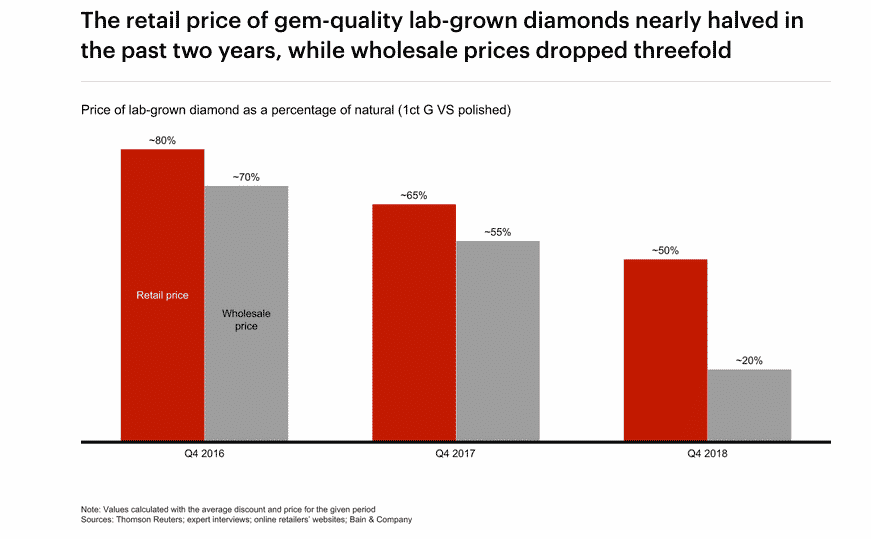FUTURE TO DEPEND ON MARKETING EFFORTS
De Beers Groups’ entry into the synthetic diamond sector, through the launch of its Lightbox Jewelry line, was a major development for the industry, the Bain report stated, and, in particular, so were the company’s efforts to position the new product as a fashion item, rather than as fine jewelry.
Lightbox does not provide grading reports for its products, the report notes, with the given reason being that grading reports record elements pertaining to a diamond’s individuality and rarity, which is not appropriate for products that are mass-produced according to a particular recipe.
If the natural diamond industry is successful in differentiating its stones from lab-grown diamonds, the Bain report says, the effect on natural diamond demand by 2030 will be limited up to 5 percent to 10 percent in value terms.
Ultimately, Bain continues, it is marketing and consumer perception will determine the effect of lab-grown diamonds on the natural diamond market. In the absence of effective marketing, which draws a clear distinction between natural and synthetic stones, consumers could come to consider them as interchangeable.













